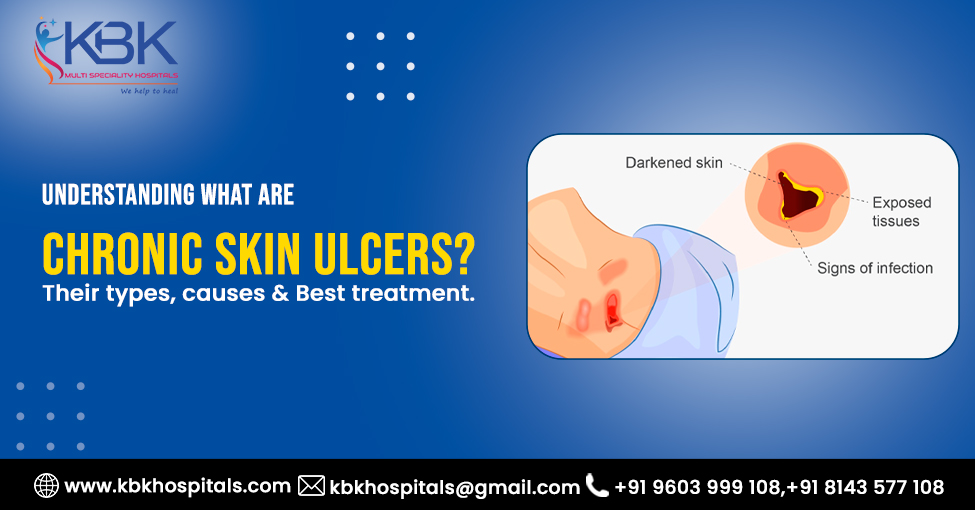The main cause of razor burn is the movement of a razor blade across your skin, which can result in tiny cracks, loss of hydration, and inflammation. Other common causes include dry shaving, shaving too fast, and using old or clogged razors.
Razor burn can occur anywhere on the body, but it is particularly common in the bikini area. It is important to take precautions to prevent and treat razor burn to avoid discomfort and skin irritation. We will explore seven reasons why you might be experiencing razor burn and provide tips for prevention and treatment.
Table of Contents
Common Causes Of Razor Burn
Razor burn is a common skin condition that can leave you with irritated, red, and inflamed skin after shaving. Understanding the common causes of razor burn can help you prevent this uncomfortable condition. Here are three common causes of razor burn:
Irritation From Dry Shaving
Dry shaving refers to shaving without using any water, soap, or shaving cream or gel. This can cause irritation because the lack of lubrication creates friction between the razor blade and your skin. Without moisture, the razor can drag across your skin, leading to tiny cracks in the top layer of your skin (epidermis). These cracks, along with a loss of hydration and inflammation, can result in razor burn.

Fast Shaving
Shaving too quickly can also contribute to razor burn. When you rush through the shaving process, you may unintentionally apply more pressure on the razor blade. This increased pressure can cause the razor to scrape against your skin, leading to irritation, redness, and razor burn. To prevent this, try slowing down and taking your time when shaving.
Using A Dull Razor
Using a dull razor blade can be a major cause of razor burn. When a razor blade becomes dull, it is less effective at cutting through the hair, which can result in pulling and tugging on the hair follicles. This pulling and tugging irritates the skin, leading to razor burn. To avoid this, make sure to regularly replace your razor blades or sharpen them if you are using a reusable razor.
Razor Bumps And Their Causes
Razor bumps, also known as pseudofolliculitis barbae, are a common skin condition that can occur after shaving. These bumps can be both unsightly and uncomfortable, often leading to itchiness and irritation. Understanding the causes of razor bumps is essential in preventing and treating them effectively.

Credit: www.lovelyskin.com
Effect Of Coarse, Curly Hairs
Hairy situations can arise when it comes to razor bumps. Individuals with coarse, curly hairs are more prone to these bumps due to the unique characteristics of their hair. When the razor cuts these hairs short, they have a tendency to curve back into the skin. This leads to ingrown hairs, triggering an inflammatory response from the skin. The result? Razor bumps.
Difference From Std Bumps
It is essential to distinguish between razor bumps and bumps caused by sexually transmitted diseases (STDs). While both may appear similar at first glance, there are distinctive features that set them apart. Razor bumps are generally smaller, inflamed, and may have visible hair at their center. In contrast, STD bumps, such as herpes sores or HPV warts, can present as blisters or raised cauliflower-shaped bumps. It’s important to consult a healthcare professional for an accurate diagnosis.
When it comes to preventing razor burn, it’s crucial to take a proactive approach. Using a lubricant such as soap, water, or shaving cream can help glide the razor smoothly over the skin, reducing the risk of irritation. Shaving in the direction of hair growth and using a sharp, clean razor are also essential in minimizing the chances of developing razor bumps. Remember, prevention is key when it comes to achieving smooth, bump-free skin post-shave.
Razor Burn In Sensitive Areas
Razor burn in sensitive areas, such as the vaginal region, can be a common and uncomfortable issue for many individuals. This condition often arises from various causes specific to sensitive skin in these areas. Understanding the causes and implementing prevention and treatment strategies is crucial for managing and avoiding this discomfort.
Causes Of Vaginal Razor Burn
The delicate skin in the vaginal area is more prone to razor burn due to several factors:
- Using an old razor with a dull blade
- Shaving in the wrong direction
- Shaving dry skin
- Shaving too quickly or too often
Prevention And Treatment
Preventing and treating razor burn in sensitive areas involves implementing specific care and practices, such as:
- Using a sharp, clean razor
- Applying a moisturizing shaving cream or gel before shaving
- Shaving in the direction of hair growth
- Patting the area dry after shaving and using a soothing moisturizer

Credit: www.timeout.com
Physical Trauma Leading To Razor Burn
Razor burn is a common skin condition that can leave you feeling uncomfortable and self-conscious. One of the key factors that can lead to razor burn is physical trauma caused by shaving. This includes factors such as friction and irritation, and the impact of using an old razor and shaving too quickly.
Friction And Irritation
Friction and irritation are two culprits that can contribute to razor burn. When you shave, the razor’s blade comes into contact with your skin, causing friction. If you shave against the direction of your hair growth, this friction can irritate your skin, leading to redness, inflammation, and razor burn.
Impact Of Old Razor And Shaving Too Quickly
Using an old razor is a common mistake that can result in razor burn. Over time, the blades of a razor can become dull and jagged, causing them to tug on your hair instead of cleanly cutting it. This pulling and tugging can cause irritation and inflammation, leading to razor burn.
Another factor that can contribute to razor burn is the speed at which you shave. Shaving too quickly doesn’t give your skin enough time to adjust and can result in nicks, cuts, and razor burn. It’s important to take your time and use slow, gentle strokes to minimize the risk of irritation.
To prevent physical trauma and reduce the likelihood of razor burn, it’s important to prioritize proper shaving techniques and equipment. Always use a sharp razor with a clean blade to ensure a smooth and comfortable shave. Additionally, using shaving cream or gel can provide lubrication, reducing friction and irritation.
Prevention And Treatment Of Razor Burn
Dealing with razor burn can be a real pain, quite literally. The redness, itchiness, and inflammation can be uncomfortable and unsightly. But fear not, there are steps you can take to prevent razor burn from occurring in the first place, as well as effective treatments if you’re already experiencing it.
Aftercare Importance
Aftercare plays a crucial role in preventing and treating razor burn. Taking care of your skin post-shave can help soothe irritation, reduce inflammation, and promote healing. Here are some aftercare practices to consider:
- Cleanse gently: Wash the shaved area with warm water and a mild, fragrance-free cleanser. Avoid using harsh soaps or scrubs that can further irritate the skin.
- Moisturize: Hydrating your skin is essential for preventing razor burn. Apply a soothing moisturizer that contains ingredients like aloe vera or chamomile.
- Avoid tight clothing: Wearing loose-fitting clothes can help prevent friction and irritation on freshly shaved skin.
Recommended Shaving Practices
The way you shave can significantly impact your risk of developing razor burn. By following these recommended practices, you can minimize the chances of irritation:
- Prepare your skin: Before shaving, take a warm shower or apply a warm towel to soften the hair and open up the pores.
- Use a sharp blade: Dull blades can tug at the hair and increase the likelihood of razor burn. Replace your blades regularly.
- Apply a lubricant: Use a shaving cream, gel, or foam to create a barrier between the razor and your skin. This helps reduce friction and irritation.
- Shave in the direction of hair growth: Going against the grain can lead to razor burn. Follow the natural direction of your hair for a smoother shave.
- Don’t apply too much pressure: Let the weight of the razor do the work. Pressing too hard can increase the chances of irritation.
- Take your time: Rushing through a shave can result in nicks, cuts, and razor burn. Be patient and give yourself enough time for a thorough shave.
- Keep your razor clean: Rinse your razor after each stroke to prevent clogging and bacteria buildup.
By implementing these practices, you can significantly reduce the risk of razor burn and enjoy a smoother, irritation-free shave. Remember, prevention is key, but if you do experience razor burn, these aftercare practices can help soothe your skin and promote healing.

Credit: kbkhospitals.com
Frequently Asked Questions Of 7 Reasons Why You Might Have Razor Burn
What Is The Main Cause Of Razor Burn?
The main cause of razor burn is the tiny cracks in the top layer of the skin caused by the blade’s movement, along with dehydration and inflammation. Other factors include dry shaving, shaving too fast, and using an old or clogged razor.
What Are The Reasons For Razor Bumps?
Razor bumps occur when the razor cuts hairs too short, causing them to curve into the skin and leading to inflammation. Coarse or curly hair is more prone to razor bumps. Shaving without water, soap, or shaving cream, shaving too fast, and using dull razors can also cause razor bumps.
Do I Have Razor Bumps Or Std?
Razor bumps are generally small, inflamed bumps with visible hair at the center, while STDs like herpes sores are blisters that can break open and leave ulcers. HPV warts may appear as small, raised or flat bumps. If you are unsure, it is best to consult a healthcare professional.
Why Am I Getting Razor Burn Down There?
Razor burn can occur due to tiny skin cracks, dehydration, and inflammation caused by shaving. Other factors include dry shaving, fast shaving, and curly hairs curving into the skin. To prevent it, use a fresh razor, shave in the right direction, and moisturize the skin properly.
Conclusion
Avoiding razor burn is possible by proper skin preparation and using a sharp, clean razor. Maintaining skin hydration is crucial, as well as being mindful of shaving direction and pressure. Additionally, incorporating soothing aftershave products can help prevent and alleviate razor burn.
Don’t let razor burn derail your grooming routine—take steps to protect your skin.